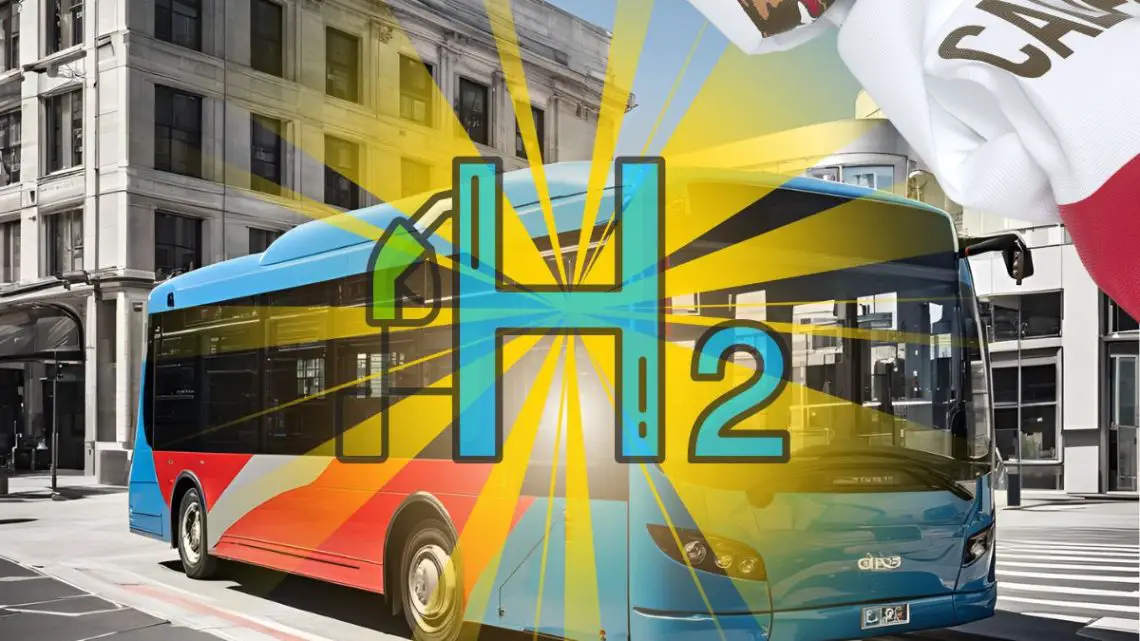Fast, Clean, Efficient: Inside California’s RTA Advanced Hydrogen Fueling Station Project
Source:Hydrogen Fuel News

Rapid Refueling, Zero Downtime – The Hydrogen Advantage for Transit
Clean Energy (NASDAQ: CLNE), a prominent provider of environmentally friendly fuel solutions, has secured a contract to design and construct an advanced hydrogen fueling station for the Riverside Transit Agency (RTA) in California. The station is a critical step in RTA’s drive to transition its fleet to zero-emission vehicles, aligning with a broader commitment to sustainable and clean public transportation. Initially supporting five hydrogen fuel cell buses, the station will eventually accommodate a fleet of over 100 buses within the next decade.
Why Hydrogen for RTA’s Fleet?
RTA serves one of the largest and most geographically challenging regions in the U.S., with some of its passenger routes extending significant distances. Hydrogen fuel technology provides a practical solution for these long-range routes. Unlike battery-electric buses whose range can be limited by the need for frequent recharging, hydrogen-powered buses offer faster refueling times and longer ranges, making them ideal for high-mileage routes. Additionally, hydrogen emits only water vapor, eliminating harmful pollutants and reducing the agency’s overall carbon footprint.
“This project reflects our commitment to fostering healthier communities by advancing clean energy solutions,” stated RTA Board Chair Jeremy Smith. “We are driving innovation while addressing the need for environmentally responsible solutions.”
The Technology Behind Clean Energy’s Hydrogen Pumps
The hydrogen fueling station designed by Clean Energy incorporates state-of-the-art technology to ensure efficient and reliable service. At the heart of this system is a high-pressure dispensing process. Hydrogen is compressed and stored in specialized tanks at the station, ensuring a consistent and readily available supply. When vehicles refuel, the hydrogen is dispensed into fuel cell buses at pressures that allow the onboard tanks to hold enough fuel for hundreds of miles per fill-up.
One of the standout features of Clean Energy’s pumps is their speed. The technology is designed to refuel buses in a matter of minutes, comparable to traditional diesel refueling times. This efficiency ensures minimal downtime for transit operators and allows for smoother bus scheduling. The technology is also modular, meaning it can be scaled up to meet future demand as RTA’s hydrogen fleet expands.
Why This Fuel Technology Stands Out
Hydrogen fuel cell technology has a clear edge over traditional fuel sources and even some alternative energy solutions like battery-electric systems. For one, hydrogen buses do not rely on heavy battery packs, which can reduce overall weight and improve energy efficiency. Additionally, hydrogen stations like the one Clean Energy is constructing can operate around the clock, providing energy storage and output capabilities without the fluctuations that challenge renewable sources like solar and wind.
Another critical aspect is lifecycle energy consumption. While battery electric vehicles (BEVs) require lithium-ion battery production that is energy-intensive and often criticized for its mining practices, hydrogen technology bypasses this issue. With continued improvement in green hydrogen production methods—where renewable energy is used to produce hydrogen gas—the overall emissions footprint will shrink even further.
Economic Benefits of Expanding Hydrogen Stations
Building more hydrogen fueling stations like the one Clean Energy plans for RTA not only supports expanded fleet capabilities but also drives down costs over time. Hydrogen infrastructure operates on economies of scale. The more stations that are constructed, the lower the costs for installation and operation become. This reduced cost trickles down to transit agencies, making hydrogen an increasingly affordable alternative to diesel or gasoline.
Furthermore, a wider network of stations adds convenience and encourages adoption by both public and private fleets. Increased popularity can lead to additional investments, furthering the development of hydrogen technology for uses beyond transit, such as personal vehicles, trucks, and industrial applications.
The ripple effect doesn’t just stay within transportation. Boosting the hydrogen economy has the potential to create jobs in station construction, equipment manufacturing, and ongoing maintenance. Locally, this supports economic activity while positioning regions like California as leaders in clean energy innovation.
A Look Ahead for Hydrogen Fueling Station Technology.
Hydrogen fueling stations like RTA’s new facility signal a significant step toward addressing long-standing environmental challenges in public transportation. While this advanced technology is still gaining traction, its current benefits are hard to ignore. Transit agencies, long-distance freight companies, and even municipalities can look to hydrogen as a practical way to slash vehicle emissions without compromising performance or reliability.
Beyond large-scale efforts, communities can already start considering hydrogen use today. With companies building the infrastructure and making improvements to hydrogen production and storage, the stage is set for widespread adoption. For individual consumers and businesses, this could mean exploring partnerships for fleet conversion, investing in clean technologies, or simply advocating for more hydrogen fueling stations in your region.
Looking to the future, hydrogen’s applications can expand even further, powering heavy equipment, aiding energy storage on grids, or serving industrial operations. With advancements in green hydrogen production, the environmental payoff will grow even more substantial. Now is the time to invest in and plan around hydrogen’s potential, ensuring a cleaner, more sustainable path forward.
